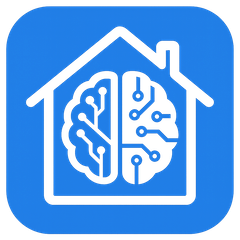Build Your Own Micro Weather Station: The Ultimate DIY Sensor for Home Assistant
By Clevr House on August 6, 2025
Go Beyond Commercial Gadgets: Why Building Your Own Sensor is a Smarter Choice
In a world full of smart devices, we often buy black-box solutions that we can't repair, modify, or truly understand. Commercial weather stations are a perfect example—they give you the data, but you're stuck with their app, their limitations, and their ecosystem. What if you could build something better, more powerful, and perfectly tailored to your needs?
This project is for anyone who wants to take back control of their data and build a piece of hardware that is both functional and deeply rewarding. We are providing the complete schematic for a compact and powerful micro weather station, designed from the ground up to be the perfect environmental sensor for your smart home.
The Heart of the Project: A Custom-Designed PCB
At the core of this weather station is a thoughtfully designed PCB that integrates best-in-class components for accurate and reliable environmental monitoring. This isn't just a random collection of parts; it's an integrated system where every component has a purpose.
Our schematic brings together:
-
The ESP8266 Controller: This tiny, Wi-Fi-enabled microcontroller is the brain of the operation. It’s powerful enough to read data from all the sensors, drive the display, and send everything to your Home Assistant server over your local network.
-
A Crisp 0.96" OLED Display: Get instant, at-a-glance readings without needing your phone. This vibrant yellow-and-blue screen provides real-time updates on temperature, humidity, and atmospheric pressure right where you need them.
-
Precision Environmental Sensors:
-
AHT20 Sensor: Measures temperature and humidity with excellent accuracy, giving you a clear picture of the comfort level in your room.
-
BMP280 Sensor: Tracks atmospheric pressure, allowing you to monitor weather trends. A falling pressure often indicates approaching bad weather, while rising pressure suggests clear skies ahead.
-
-
Rock-Solid Stability: The PCB design includes a dedicated space for a pull-up resistor. This small but crucial component ensures the ESP8266 receives stable power, preventing random crashes or reboots and guaranteeing your sensor runs reliably 24/7.
The Power of DIY: More Than Just a Device
When you build your own device from a schematic, you get more than just a weather station.
-
You Understand It: You know exactly what components are used, how they connect, and how it all works. This makes troubleshooting and future upgrades simple.
-
You Own It (Truly): There are no subscriptions, no cloud accounts, and no reliance on a company that could discontinue a product. Your data stays on your network, under your control.
-
It's a Gateway to Learning: This project is a fantastic introduction to electronics, soldering, and microcontroller programming. It’s a rewarding experience that leaves you with new skills and a genuinely useful device.
The Home Assistant Superpower: From Data Points to True Intelligence
The real magic happens when you connect your new sensor to Home Assistant. The ESP8266 seamlessly integrates with it, turning your DIY project into a first-class citizen of your smart home. This unlocks a world of possibilities that commercial devices can't offer:
-
Unlimited Data History: Home Assistant will automatically log all the data from your sensor indefinitely. You can visualize trends over days, weeks, or even years. See exactly how the temperature in your office changes in the summer or track the pressure changes during a storm.
-
Powerful Automations: Use your sensor's data as a trigger for intelligent actions.
-
Is the humidity in the bathroom too high after a shower? Automatically turn on the exhaust fan.
-
Is the server closet getting too hot? Get an alert on your phone and turn on a cooling fan.
-
Is the atmospheric pressure dropping rapidly? Announce a weather alert on your smart speakers.
-
-
Unified Dashboards: Add your weather station's data to your central Home Assistant dashboard. See all your critical home information—from lights and security to detailed environmental data—in one clean interface on your computer, tablet, or a wall-mounted display.
Start Your Build Today
Stop being a passive consumer of technology and become a creator. By building this micro weather station, you’ll gain a deeper understanding of the environment around you and unlock the true potential of a connected home. Grab our schematic, fire up your soldering iron, and build a device that is truly yours.
